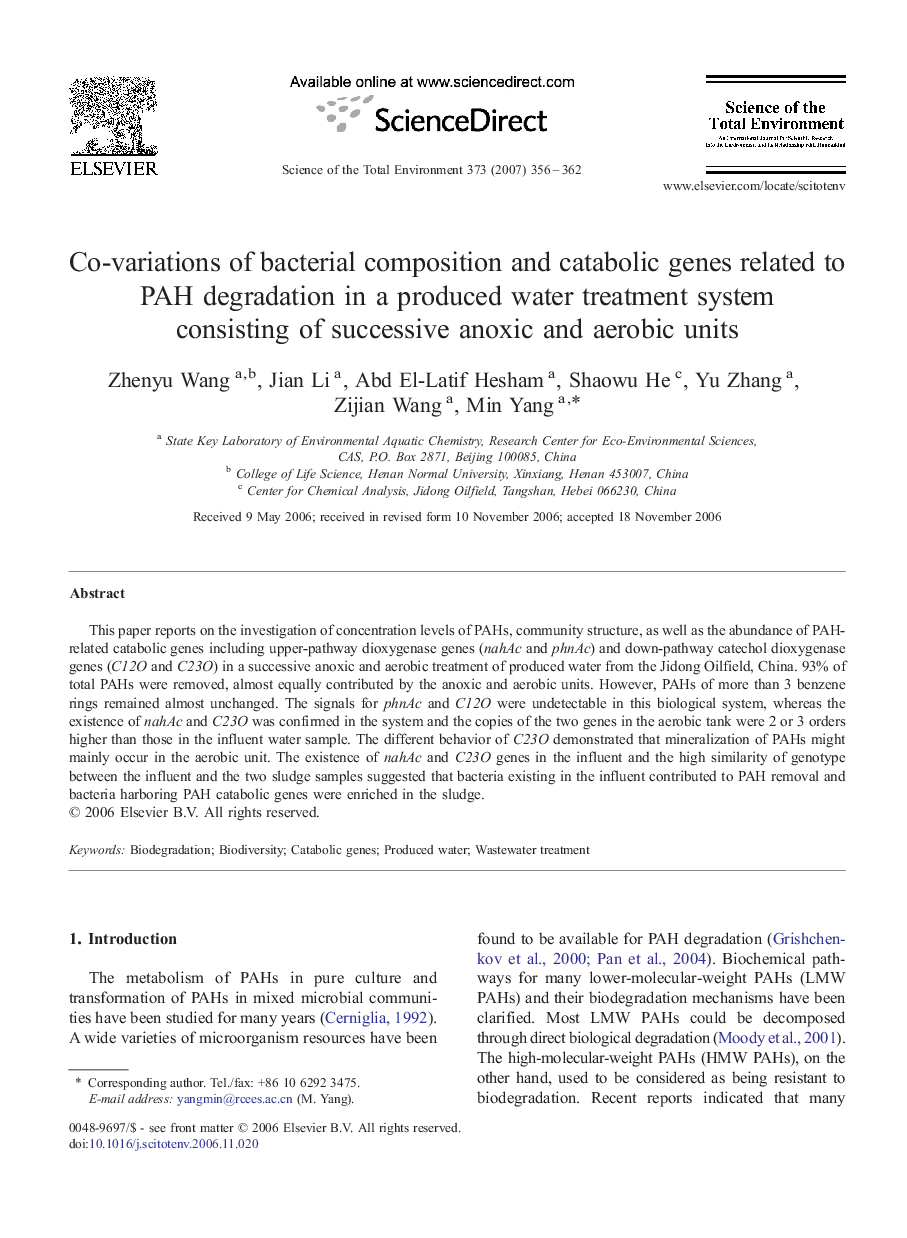| Article ID | Journal | Published Year | Pages | File Type |
|---|---|---|---|---|
| 4433538 | Science of The Total Environment | 2007 | 7 Pages |
This paper reports on the investigation of concentration levels of PAHs, community structure, as well as the abundance of PAH-related catabolic genes including upper-pathway dioxygenase genes (nahAc and phnAc) and down-pathway catechol dioxygenase genes (C12O and C23O) in a successive anoxic and aerobic treatment of produced water from the Jidong Oilfield, China. 93% of total PAHs were removed, almost equally contributed by the anoxic and aerobic units. However, PAHs of more than 3 benzene rings remained almost unchanged. The signals for phnAc and C12O were undetectable in this biological system, whereas the existence of nahAc and C23O was confirmed in the system and the copies of the two genes in the aerobic tank were 2 or 3 orders higher than those in the influent water sample. The different behavior of C23O demonstrated that mineralization of PAHs might mainly occur in the aerobic unit. The existence of nahAc and C23O genes in the influent and the high similarity of genotype between the influent and the two sludge samples suggested that bacteria existing in the influent contributed to PAH removal and bacteria harboring PAH catabolic genes were enriched in the sludge.
